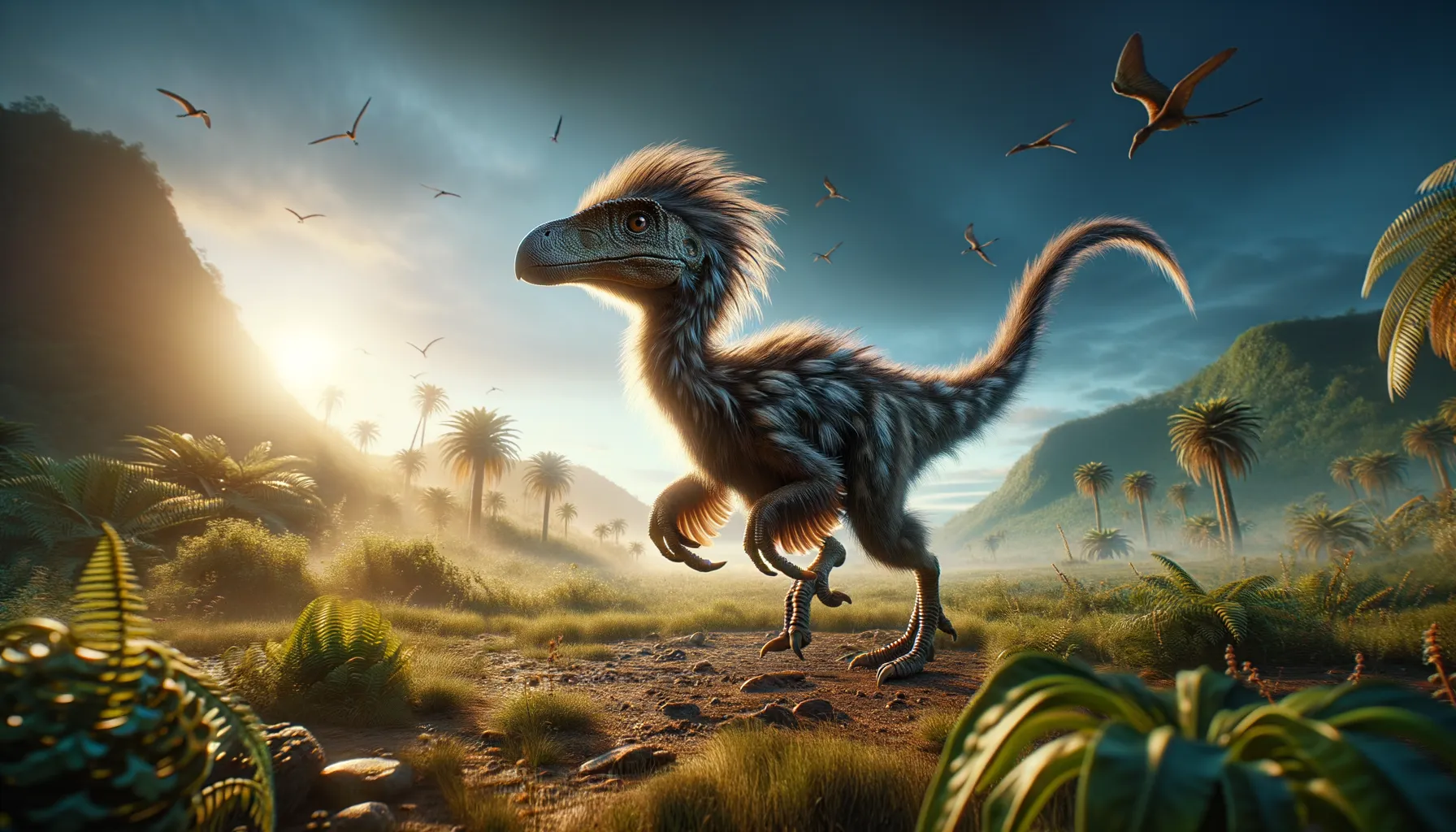
Aurornis
Early ancestor of modern birds.
Period
Jurassic
Length
Approximately 50 centimeters long.
Height
Around 20 centimeters tall.
Weight
Approximately 1.5 kilograms.
Aurornis is a small, feathered dinosaur believed to be one of the earliest ancestors of birds. It lived during the Jurassic period and is known for its bird-like characteristics. Its discovery has provided significant insight into the evolutionary transition between non-avian dinosaurs and birds. Aurornis was a bipedal creature that showcased both primitive and advanced features, making it a fascinating subject for paleontologists studying the origins of flight.
Diet
Aurornis was likely an omnivore, feeding on small insects, plants, and seeds. Its diet would have been influenced by its size and habitat, where it could easily find these food sources.
Hunting
Being a small creature, Aurornis probably foraged rather than hunted, picking off small insects and critters it could catch. Its speed was not suited for active pursuit of prey, suggesting a more opportunistic feeding strategy.
Environmental challenges
Living during the Jurassic period, Aurornis faced challenges such as climatic shifts and competition for food. These factors would influence its evolutionary path and survival strategies. Add to that the presence of larger predators, which posed a constant threat.
Speed
Slow, used more for walking than running.
Lifespan
Lifespan details are not precisely known.
First discovery
Discovered in 2013 in China.
Fun Facts
- Aurornis lived approximately 160 million years ago during the Jurassic period.
- It was roughly the size of a modern-day chicken, making it quite small for a dinosaur.
- Aurornis is known for being one of the earliest bird-like dinosaurs, providing insights into the evolution of birds.
- Its name means 'dawn bird' which highlights its significance in the study of early avian ancestors.
- Aurornis had feathers, which scientists believe it may have used for insulation rather than flying.
- The discovery of Aurornis helped clarify the relationship between dinosaurs and birds, showing how closely related they are.
- Fossils of Aurornis were first discovered in the Tiaojishan Formation of Liaoning Province, China in 2013.
Growth and Development
Aurornis likely hatched from eggs and went through several growth stages before reaching maturity. As one of the earlier bird-like dinosaurs, its development provides clues to avian evolution and growth patterns. Its small size suggests a faster growth cycle compared to larger dinosaurs.
Habitat
Aurornis inhabited forested areas, abundant with plant life and small creatures. Such environments offered cover from predators and a diverse food supply. The forests provided the resources essential for their survival and growth.
Interaction with other species
Aurornis would have interacted with other small dinosaurs and early mammals, often competing for similar food resources. Its small size meant it had to be cautious of larger predators. Cooperative behavior may have evolved as a survival tactic.
Natural lifespan
Its natural lifespan is not well-documented, but it was likely limited by environmental and predatory pressures.
Reproduction
Reproduction was likely through oviposition, laying eggs in nests for protection. This reproductive strategy is consistent with many dinosaurs and early birds. Parental care might have been present to some extent to protect the offspring.
Social behaviour
Aurornis may have exhibited some degree of social behavior, especially in nesting. Group living could offer advantages, such as enhanced protection and foraging efficiency. Its interactions would have been crucial for survival in a prehistoric ecosystem.
Fossil locations
Fossils of Aurornis have been primarily found in China, providing a glimpse into its existence during the Jurassic period. These fossils are pivotal for understanding the evolutionary lineage of avian species. Ongoing excavations continue to reveal more about its biology and ecology.
